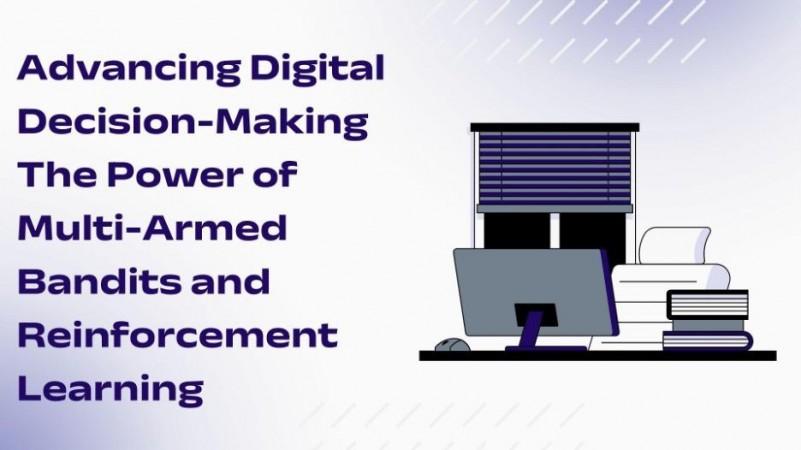
In this modern era, the landscape of digital optimization is evolving, and innovative methodologies are reshaping how organizations approach decision-making. The need for adaptive and intelligent frameworks has never been greater, as businesses strive to enhance user experiences and optimize decision-making processes. Emerging technologies are now enabling more precise, data-driven strategies that significantly improve outcomes. In this pursuit, Vijay Vaibhav Singh presents groundbreaking research on the integration of Multi-Armed Bandits (MAB) and Reinforcement Learning (RL) in statistical testing frameworks. His work explores how these methodologies enhance efficiency, and refine adaptive learning models.
The Evolution of Adaptive Decision-Making
Modern digital platforms require decision-making frameworks that balance exploration and exploitation. MAB algorithms address this challenge by optimizing real-time decision-making while reducing uncertainty. The incorporation of RL further enhances this adaptability, allowing systems to learn from sequential decisions and refine their predictions over time.
Bridging the Gap Between MAB and RL
Traditional statistical testing methods often require extensive sampling and long iteration cycles. MAB introduces a probabilistic approach that prioritizes high-reward options while still exploring alternatives. RL, on the other hand, builds upon this by applying long-term learning strategies, refining decision-making with each new data point. The synergy of these two methodologies creates an advanced framework that dynamically adapts to evolving scenarios.
Enhancing Content Optimization Strategies
One of the most compelling applications of this hybrid approach is in content recommendation. The ability to tailor digital experiences based on user interactions has significantly improved engagement rates. Adaptive models that incorporate MAB and RL have demonstrated notable improvements in customer retention, reducing abandonment rates and increasing personalization accuracy. By leveraging real-time learning, digital platforms can provide highly relevant content, leading to improved user satisfaction.
Optimizing Decision-Making in Dynamic Environments
Businesses operating in high-variability environments, such as e-commerce and digital marketing, benefit greatly from automated decision-making frameworks. MAB's ability to identify optimal choices efficiently, combined with RL's capacity for strategic refinement, ensures that decision-making aligns with both short-term performance goals and long-term strategic objectives. This approach minimizes resource expenditure while maximizing impact, offering a significant advantage in rapidly changing industries.
Revolutionizing A/B Testing Frameworks
A/B testing has long been the standard for evaluating digital experiences. However, traditional A/B testing requires extensive time and sample sizes. The integration of MAB into testing methodologies has revolutionized the process by continuously adjusting in real-time, significantly reducing sample requirements while improving accuracy. RL further refines this by enabling a continuous learning loop, ensuring that insights remain relevant even as conditions change.
Overcoming Technical Challenges
Despite the promising potential of MAB-RL integration, challenges remain in implementation. One critical aspect is balancing exploration and exploitation effectively. Too much exploration can lead to inefficiencies, while over-exploitation may result in suboptimal decision-making. Ensuring computational efficiency and mitigating bias in reward distributions are also essential considerations in deploying these models at scale.
The Future of Intelligent Statistical Testing
As machine learning and artificial intelligence continue to evolve, the fusion of MAB and RL is poised to become a cornerstone of intelligent statistical testing. Future advancements in automated feature engineering, contextual adaptation, and multi-objective optimization will further enhance the capabilities of these frameworks. Organizations that invest in these innovations will be well-positioned to drive efficiency, accuracy, and adaptability in their decision-making processes.
In conclusion, Vijay Vaibhav Singh's research highlights the transformative potential of combining Multi-Armed Bandits and Reinforcement Learning. By addressing both immediate decision-making needs and long-term learning objectives, this approach presents a powerful solution for organizations aiming to optimize digital experiences and operational efficiencies. As industries increasingly rely on data-driven strategies, these methodologies will play a critical role in shaping the next generation of intelligent optimization frameworks.








![Sky is the limit: IndiGo is now tenth largest airline by capacity globally; growth indisputable [details]](https://data1.ibtimes.co.in/en/full/767455/sky-limit-indigo-now-tenth-largest-airline-by-capacity-globally-growth-indisputable-details.jpg?w=220&h=138)








